August 01, 2025 | 22:22 (GMT+7)
Two thousand-year-old tofu-making craft of Mo village in Hanoi
PANO - Mo village’s tofu is famous for its pure white color, rich and creamy texture, and a history tracing back 2,000 years ago to the ancient land of Ke Mo, Thang Long - Hanoi.
Legend has it that Nguyen Tam Trinh, a talented general under the Trung Sisters’ command and a son of Thanh Hoa, was the founder of tofu-making in Mai Dong (present Hoang Mai, Hanoi).
    |
 |
|
A view of the 2,000-year-old tofu-making craft of Mo village in Hanoi |
During a stop, charmed by the blossoming apricot and plum trees, he settled down, opened a martial arts training hall, and taught locals martial arts for self-defense. He introduced tofu made from soybeans, which was initially to feed soldiers. Locals believe the village’s clean water gives Mo tofu its unique flavor. Nguyen Tam Trinh is now worshipped as Mai Dong village’s tutelary deity.
Today, a dozen households in Mai Dong village still keep the tradition alive, including the family of Trieu Thi Hoang Yen, who has been making tofu for over 50 years. According to Yen, the tofu-making process involves five steps. To meet the market demand, her family starts work at 1 to 2 a.m. and works non-stop for 12 hours.
    |
 |
|
The process begins with selecting plump, golden soybeans. The dried soybeans are thoroughly washed to remove impurities and shriveled beans, then soaked for four hours to fully expand in preparation for grinding. Thorough washing ensures smooth and naturally sweet soy milk. |
    |
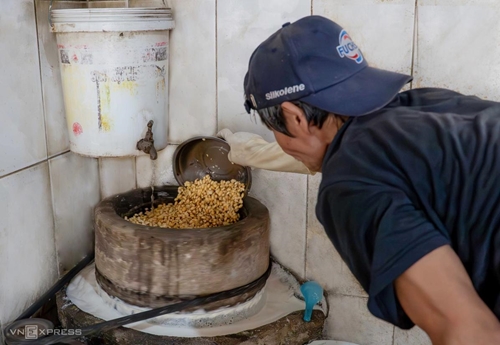 |
|
The soaked beans are poured into a grinder. Water is added gradually during grinding to achieve a balanced soy milk. |
    |
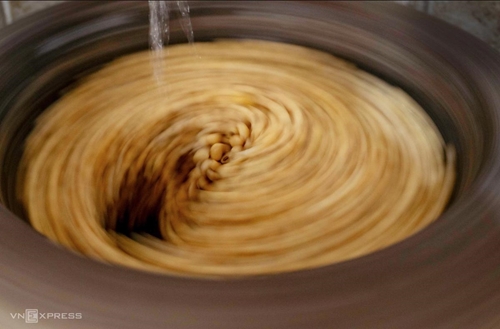 |
|
Grinding and filtering are now done with machines, making the process much less labor-intensive compared to manual methods in the past. The soybean pulp left from the process is reused as animal feed. |
    |
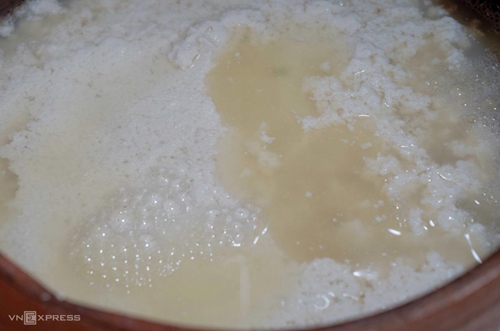 |
|
The extracted soy milk is put through a mechanical press and passed through 2 to 3 layers of cloth for fine filtration, ensuring pure soy milk free from residue. The filtered milk is then boiled at high heat. After boiling, it is poured into medium-sized pots and mixed with a small spoon of salt and a natural sour starter to coagulate the soy milk into soft tofu curds. |
    |
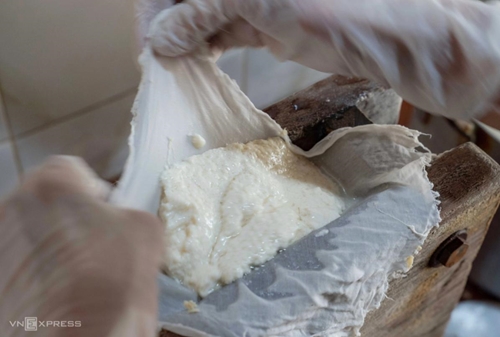 |
|
The resulting tofu curd is scooped out, wrapped in muslin cloth, and placed into wooden or stainless steel molds to be pressed into tofu blocks. According to Yen, 30 blocks can be made from each batch. |
    |
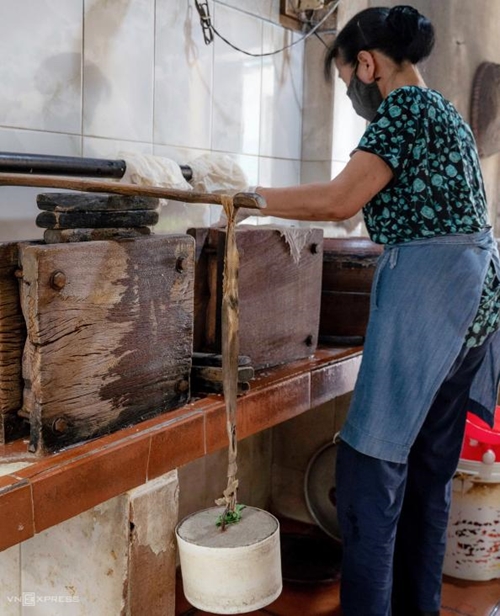 |
|
To ensure the tofu blocks are firm and well-shaped, a 1.5 to 2 kg weight is placed on the mold and pressed for five minutes. Larger blocks may require more pressing time. |
    |
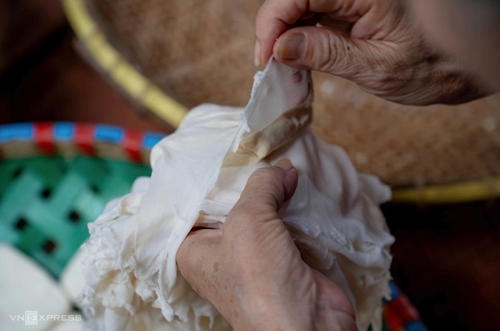 |
|
Once removed from the mold, the tofu is still hot. To keep it fresh until afternoon, it is soaked in cold water. |
    |
 |
|
A household can produce 40 to 50 kg of tofu per day. Tofu blocks are sold at about VND 2,500 each, and soy milk at VND 5,000 per bag. |
    |
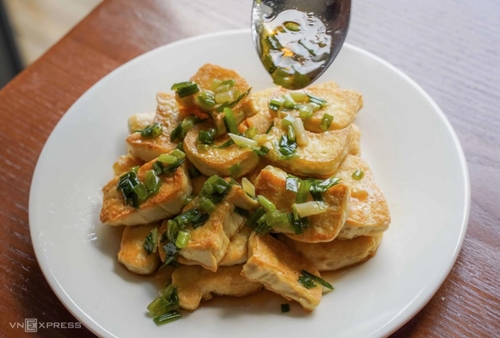 |
|
Mo village’s tofu can be served hot with shrimp paste or used in dishes like fried tofu with scallion oil or bun dau mam tom (rice vermicelli with fried tofu and shrimp paste). When fried, the tofu turns golden and crispy outside while remaining soft and rich inside. |
Source: Vnexpress
Translated by Chung Anh